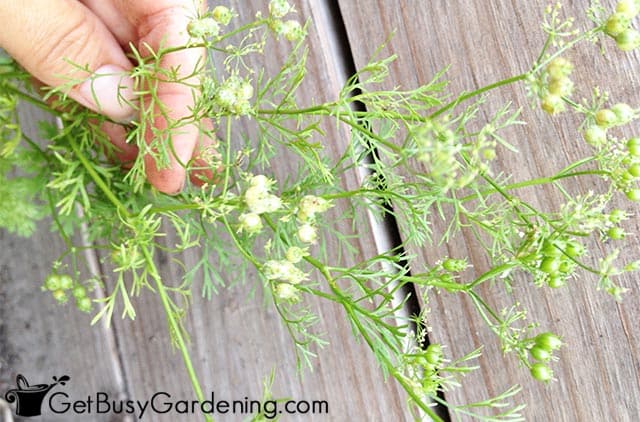

When To Transplant Coriander Seedlings: Conclusion When watering, use a spray bottle to avoid overwatering as it can cause root rot. Gently remove the seedlings from the small circles and immediately insert them in their designated holes in the garden before gently filling the excess room with soil.Ĭilantro seedlings generally do not need a lot of water, but you may need to water often in the first week to help ensure the plant establishes itself. Although a certain level of damage is inevitable, digging large circles can lower damage. To remove them from pots without damaging their root system, use a trowel to dig a wide circle around each plant before lifting it. Cilantro plants usually have tap roots, so make the hole about 3-4 inches deep.Ĭoriander seedlings have sensitive root systems that dislike being distubed.

Next, dig holes deep enough to accommodate the taproots, leaving 8-12 inches between holes and 12-15 inches between rows. This can go a long way to boosting drainage while adding necessary nutrients to the soil. Prepare the planting site and dig holesīefore planting your coriander seedlings, incorporate organic material into at least the top 6 inches of your garden. Keep in mind that the intense heat of the afternoon sun can make cilantro leaves bitter and inedible.ģ. They do well with 4-6 hours of the bright morning sun or bright, filtered sunlight all day. When transplanting, you should plant the seedlings in a spot that receives partial shade. Planting during this time will ensure that the plants mature before the temperatures rise above 85☏.Ĭilantro can thrive in many soil types with controlled levels of moisture and nutrients but prefers average, well-drained soil with a slightly acidic pH. That said, the best time to transplant coriander is two to three weeks after the last frost. For this reason, you want to do proper timing otherwise, you may only get frustrated. Here are steps and tips to help ensure you transplant your cilantro successfully:Ĭoriander plants are sensitive to increases in temperatures and could even bolt immediately after they are set out of pots. Many gardeners and chefs also prefer to plant them in a fixed location from seeds until harvest to prevent wilting after transplant.Īll in all, gardeners who wish to grow cilantro in large quantities can successfully transplant the seedlings with a few tricks. To achieve a contact supply, you may want to sow small amounts every 2-3 weeks.Ĭilantro will almost certainly bolt in summer or when temperatures go high.Ĭoriander is relatively easy to grow and care for but can be very tricky to transplant, a reason why it is often listed among the plants that are difficult to transplant. For this reason, you want to transplant when the temperatures are anywhere between 50 to 85 degrees Fahrenheit.Ĭoriander leaves are naturally ready for harvesting after 3 to 4 weeks, and the harvesting period lasts for about three weeks.

Whichever your reason for growing cilantro, if you have coriander seedlings that you wish to transplant, the best time to transplant these herbs is in spring or fall.Ĭoriander seedlings prefer cool weather and are sensitive to an increase in temperature. That’s why many chefs specializing in these kinds of dishes prefer raising these herbs in pots or gardeners to ensure a constant supply. The demand for coriander is pretty high in many cuisines and dishes.

When To Transplant Coriander Seedlings: Conclusion When is the best time to transplant coriander seedlings


 0 kommentar(er)
0 kommentar(er)
